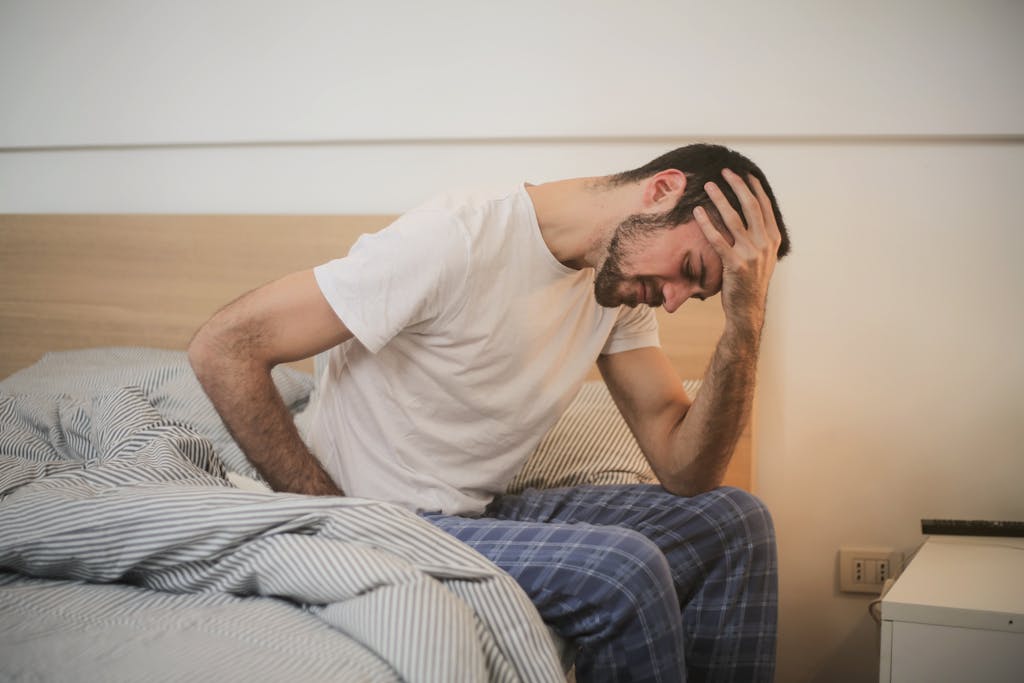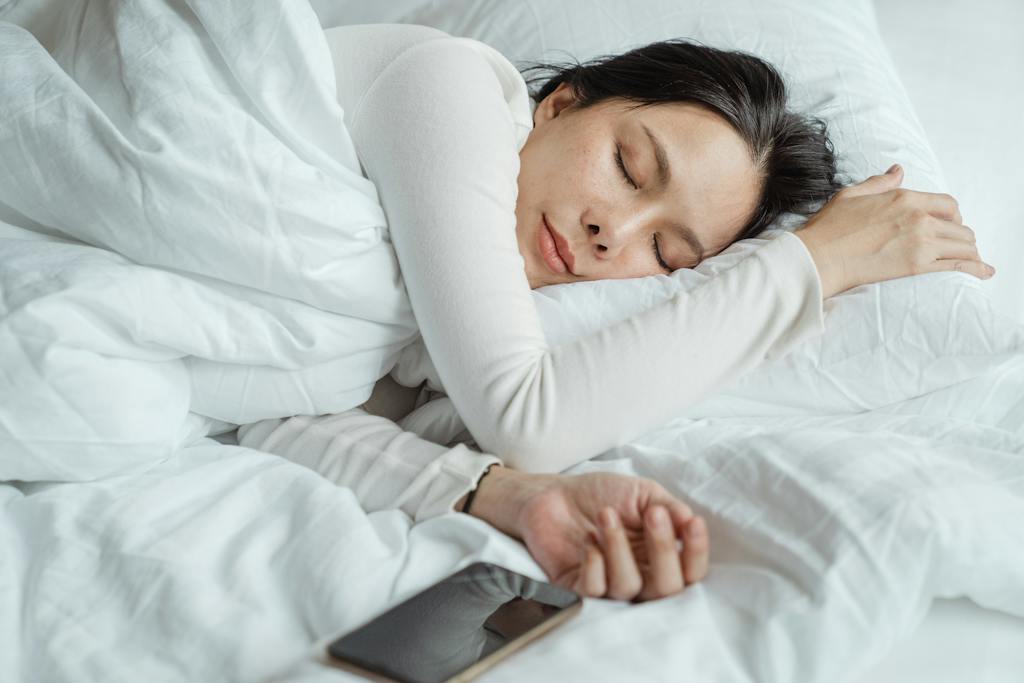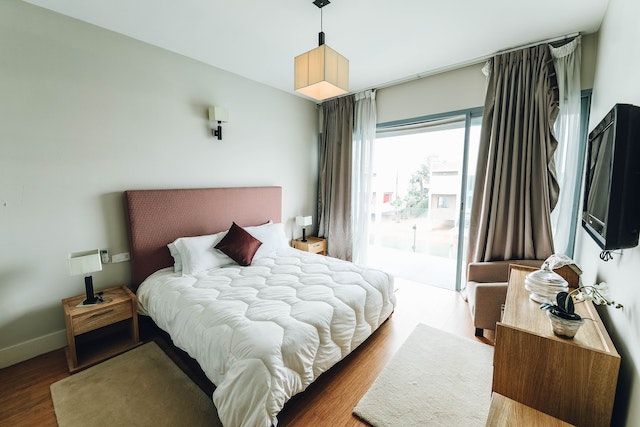Sleep Position for Back Pain: Best Positions for a Pain-Free Night’s Rest
There are some affiliate links below, but they are all products I highly recommend. For more info, view my disclosure here.
If you suffer from back pain, you know how much it can disrupt your sleep. Finding a comfortable sleep position can be a challenge, but it’s crucial for getting a good night’s rest. Your sleep position can either alleviate or exacerbate your back pain, so it’s important to find the right one for you.
Sleeping on your back is often recommended for those with back pain, as it can help distribute your weight evenly and keep your spine in a neutral position. However, this position may not be comfortable for everyone, and some may find it worsens their pain.
Sleeping on your side with a pillow between your legs can also be effective, as it can help align your spine and reduce pressure on your lower back. On the other hand, sleeping on your stomach is generally not recommended, as it can put strain on your neck and lower back.

Understanding Back Pain and Sleep
The Impact of Sleep on Back Pain
Back pain can be a debilitating condition that affects your daily life. One of the factors that can contribute to back pain is poor sleep posture. When you sleep, your spine needs to be in a neutral position to avoid putting unnecessary stress on your muscles, ligaments, and joints. If you sleep in a position that puts your spine out of alignment, you can wake up with a sore back.
The way you sleep can also affect the quality of your sleep. If you are in pain, you may have a hard time falling asleep or staying asleep. This can lead to fatigue and make your back pain worse.
Common Causes of Back Pain
There are many causes of back pain, and some of the most common include:
Injury: A sudden injury, such as a fall or a car accident, can cause back pain.
Arthritis: Arthritis can cause inflammation in your joints, including your spine
Herniated disc: A herniated disc occurs when the soft tissue between your vertebrae pushes out and puts pressure on your nerves.
Degenerative disc disease: As you age, the discs in your spine can wear down and become less flexible, which can lead to back pain.
Isthmic spondylolisthesis: This condition occurs when a vertebra slips out of place and puts pressure on your nerves.
Scoliosis: Scoliosis is a condition where your spine curves to the side, which can cause back pain.
Sciatica: Sciatica occurs when the sciatic nerve, which runs from your lower back down to your legs, is compressed or irritated.
Spinal stenosis: Spinal stenosis is a narrowing of the spinal canal, which can put pressure on your nerves and cause back pain.
By understanding the causes of your back pain, you can take steps to prevent it from getting worse. One of the things you can do is to make sure you are sleeping in a position that is comfortable and supports your spine.
Optimal Sleep Positions for Back Pain Relief
If you suffer from back pain, you know how difficult it can be to get a good night’s sleep. Choosing the right sleep position can make a big difference in how you feel when you wake up in the morning. Here are some optimal sleep positions to help relieve back pain.
Lying Flat on Your Back
Sleeping on your back can be a good position for those with back pain, as it helps to keep your spine in a neutral position. To further support your back, place a pillow under your knees to help maintain the natural curves of your spine. If you find that your lower back is still uncomfortable, try placing a rolled-up towel under the small of your back.
Side Sleeping with Support
Side sleeping can also be a good position for those with back pain, but it’s important to have proper support. Place a pillow between your knees to help keep your hips and spine in a neutral position. You may also want to consider using a body pillow to provide additional support and help prevent you from rolling onto your stomach during the night.
Fetal Position
Sleeping in the fetal position can provide relief for some people with back pain, but it’s important to make sure you’re not curling up too tightly. Place a pillow between your knees and consider using a small pillow to support your neck. If you find that you’re waking up with sore hips or shoulders, try switching to a different sleep position.
Reclined Position
If you have a reclining bed or adjustable bed, you may find that sleeping in a slightly reclined position can help relieve back pain. This position can help take pressure off your spine and provide support for your natural curves. If you don’t have an adjustable bed, try propping yourself up with pillows to achieve a similar effect.
Remember, finding the right sleep position is just one part of relieving back pain. It’s also important to have a supportive mattress and pillow that help maintain spinal alignment. Consider trying a memory foam mattress or pillow that conforms to your body and provides targeted support. With the right sleep position and support, you can wake up feeling refreshed and pain-free.
Choosing the Right Mattress and Pillow
When it comes to managing back pain, choosing the right mattress and pillow is crucial. The right combination of the two can help alleviate pain, improve sleep quality, and promote spinal alignment. Here are some factors to consider when choosing a mattress and pillow to help manage back pain.
Mattress Firmness and Support
The firmness and support of your mattress play a significant role in managing back pain. A firm mattress can provide the necessary support to keep your spine in a neutral position, preventing it from sinking too deeply into the mattress. However, a mattress that is too firm can cause pressure points and exacerbate pain.
When choosing a mattress, look for one that provides support while also conforming to the natural curve of your spine. A medium-firm mattress is often the best option for those with back pain, but it’s important to test out different options to find what works best for you.
Pillow Types and Placement
In addition to a supportive mattress, the right pillow can also help alleviate back pain. The goal of a pillow is to support the natural curve of your spine while you sleep.
If you sleep on your back, a pillow that is too high can push your head forward, causing strain on your neck and upper back. A pillow that is too low can cause your head to sink back, putting pressure on your lower back. A rolled towel placed under your neck can help maintain proper alignment.
If you sleep on your side, a pillow that is too high can cause your head to tilt down, putting pressure on your neck and upper back. A pillow that is too low can cause your head to tilt up, putting pressure on your lower back. Look for a pillow that is thick enough to support the distance between your ear and shoulder while keeping your spine in a neutral position.
Choosing the right mattress and pillow is essential for managing back pain. Look for a mattress that provides support while conforming to the natural curve of your spine and a pillow that supports the natural alignment of your neck and spine. With the right combination, you can improve your sleep quality and reduce back pain.
Lifestyle Adjustments for Back Pain Sufferers
Back pain can be a debilitating condition that affects your daily life. However, there are several lifestyle adjustments that you can make to alleviate the pain and improve your quality of life. Here are some simple changes that you can make to your lifestyle:
Exercise and Physical Activity
Exercise and physical activity are essential for maintaining a healthy body and reducing the risk of back pain. Regular exercise can help strengthen the muscles in your back, improve your posture, and increase flexibility. Some of the best exercises for back pain include yoga, swimming, and walking.
Proper Posture and Movement
Proper posture and movement are crucial for preventing and reducing back pain. When sitting or standing, make sure to keep your back straight and your shoulders relaxed. Avoid slouching or hunching over. When lifting heavy objects, use your legs instead of your back, and avoid twisting your body.
Home Remedies and Pain Management
There are several home remedies and pain management techniques that you can use to alleviate back pain. Applying ice or heat to the affected area can help reduce inflammation and relieve pain. Over-the-counter pain relievers, such as ibuprofen or acetaminophen, can also be effective in reducing pain.
In addition to these remedies, there are several home remedies that you can try, such as massage therapy, acupuncture, and chiropractic care. These treatments can help reduce pain and improve your overall well-being.
By making these simple lifestyle adjustments, you can reduce the frequency and severity of back pain, allowing you to enjoy a better quality of life.
When to Consult Healthcare Professionals
Back pain can be a serious issue, especially if it is affecting your sleep. While changing your sleep position can help alleviate some of the discomfort, there are times when you should consult a healthcare professional.
Recognizing Serious Symptoms
If you are experiencing any of the following symptoms, you should seek medical attention:
- Numbness or weakness in your legs or arms
- Shooting pain down your leg(s)
- Trauma to your back
- Fever
- Unexplained weight loss
- History of cancer
These symptoms could indicate a more serious underlying issue, get them checked out by a doctor.
Physical Therapist and Chiropractor Visits
If your back pain is not caused by a serious underlying issue, but is still affecting your sleep, you may want to consider visiting a physical therapist or chiropractor.
A physical therapist can help you strengthen the muscles in your back and improve your posture, which can alleviate some of the pain. They may also recommend specific exercises or stretches to help you sleep more comfortably.
A chiropractor can help realign your spine and alleviate pressure on your nerves, which can also help reduce back pain. They may also recommend specific adjustments or stretches to help you sleep more comfortably.
If you are unsure whether you should see a physical therapist or chiropractor, consult with your healthcare provider to determine the best course of action for your specific situation.
If your back pain is severe or accompanied by any of the symptoms listed above, seek medical attention as soon as possible.






